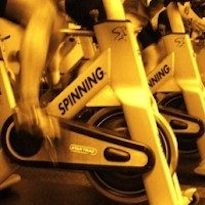In part 2 of our series on developing a faster cadence, we covered four key considerations before pedaling more quickly, including visualization and mind-body exercises to improve focus. Leg-speed drills should be performed consciously to ingrain smooth pedal motion into muscular patterns.
Repeated patterns create adaptations in the muscles—both metabolic (affecting fiber recruitment) and neuromuscular (improving coordination). Proper bike setup, relaxed posture, and concentrated focus accelerate these adaptations. (See the ICA profile Betwitched for an example.)
In part 3, we’ll explore advanced drills for cadence improvement: cadence ladders, cadence pyramids, spin-ups, and accelerations. We’ll also share links to seven ICA profiles and one virtual workshop designed to help you teach these concepts and show riders how higher cadence affects intensity.
SIDEBAR: Surge vs. Acceleration vs. Spin-Up
What’s the difference between an acceleration, a surge, and a spin-up on the indoor bike? The distinctions are subtle—some might call it semantics—but it helps to clarify.
-
- Acceleration: The act of speeding up—pedaling faster against a constant resistance. Outdoors, this would translate to an increase in bike speed if gears remain the same.
- Spin-up: Spin-ups are a term commonly used by cyclists for a specific type of acceleration drill.
- Surge: An acceleration with purpose, held briefly—usually 10–20 seconds up to a minute. Surges can be gentle or intense; bigger surges include attacks (out of the saddle) and sprints (explosive, near-maximal efforts).
- Acceleration: The act of speeding up—pedaling faster against a constant resistance. Outdoors, this would translate to an increase in bike speed if gears remain the same.
Tip: All sprints and attacks are surges, but not all surges are sprints. For simplicity, this series will mainly use the term “surge” unless speaking of a specific acceleration or spin-up drill.
Drills to Improve Leg Speed
More Resources: Seven ICA Profiles and One Online Workshop
- Surges and Accelerations – High-intensity profile that begins with a cadence ladder and progresses to accelerations and intensity surges. Riders learn to smoothly increase cadence, then return to baseline, building technical skill and confidence.
- Spin-Ups and Accelerations – NOTE: This was the first edition of the Surges and Accelerations profile above, posted the first year of ICA in 2011. I’m including it here so you can see the evolution of ICA’s educational profiles, as well as possibly pick up some other ideas, as I changed a few things in the newer edition. The older version is still applicable, and you may prefer some of the original songs.) Introduces accelerations to improve leg speed in a structured, repeatable format.
- A Cadence Ladder: 80–100 RPM – Focused on expanding riders’ comfortable cadence range. Can be adapted as shorter drills for other classes. Teaches precision and awareness of cadence changes.
- Betwitched – High-intensity profile exploring slow- and fast-twitch muscle fibers in a practical, engaging way. Includes challenging drills that demonstrate physiology in action.
- Slow-Twitch vs. Fast-Twitch Intervals – Contrasts steady-state aerobic efforts with high-intensity anaerobic intervals. Shows riders how different energy systems contribute to performance and fatigue.
- Progressive High-Cadence Tempo Intervals – Aerobic-focused training ride emphasizing leg speed, efficiency, and smooth pedaling over time. Ideal for building consistent, high-speed cadence.
- Cause and Effect – Educational profile highlighting the relationship between cadence, resistance, heart rate, perceived exertion, and breathing. Helps riders understand how form and technique affect output and fatigue.
- Cause and Effect Workshop and Master Class – One-hour virtual workshop including a ride. Designed for instructors teaching with or without power, emphasizing coaching intensity, proper resistance, and the effect of cadence on overall performance.
Additional ICA articles on leg speed: Prepping for a Reset: Developing Leg Speed
Part 4 will dive into the language and coaching strategies that make high-cadence drills effective. You’ll discover how to cue riders to relax their upper body, engage their legs efficiently, and stay focused, helping them translate technical practice into real performance gains.
Additional ICA articles on leg speed: Prepping for a Reset: Developing Leg Speed
Other articles in this series:
How to Develop a Faster Cadence, Part 1: Why Cadence Matters
How to Develop a Faster Cadence, Part 2: Four Considerations for Training Leg Speed


Thank you for this series on how to develop faster cadence! I have been using it in one of my more focused classes for the last several weeks and used the cause and effect ride this past Saturday. I found it a very challenging ride as I also need to improve higher cadence work. It may not be difficult to reach higher cadences (95 or better) but it was difficult for my class and myself to maintain with adequate resistance and challenge for efforts >1 min. We now have some areas to work! Thanks for the great ideas for coaching and drills to really dial in the technique. I have found it very effective to use the face of a clock drill during recovery with eyes closed to really focus on the mind-body connection and visualization. Then I like playing “find the time” as a good association/dissociation during sustained, challenging efforts.
You are so welcome Meghan! I’m so glad the drills and profile have helped. I love how you use the “find the time” drill as a way to highlight association and dissociation. Great idea!
Thanks for this focus. It is something I need to work on doing more in my classes! Question – many people in my classes can’t hit as high of cadences standing as they can seated, even with a touch more resistance. Most top out in the low 80’s. I was reading the Cadence Ladder profile and see where it goes to standing at higher cadences. There are some coaching cues on the playlist for standing but it would be great if you could address coaching higher speed while standing in particular in your series! Thanks!
I’m planning on filming a video to address certain cadence issues and will add standing at higher cadence to the video. Thanks for the suggestion!